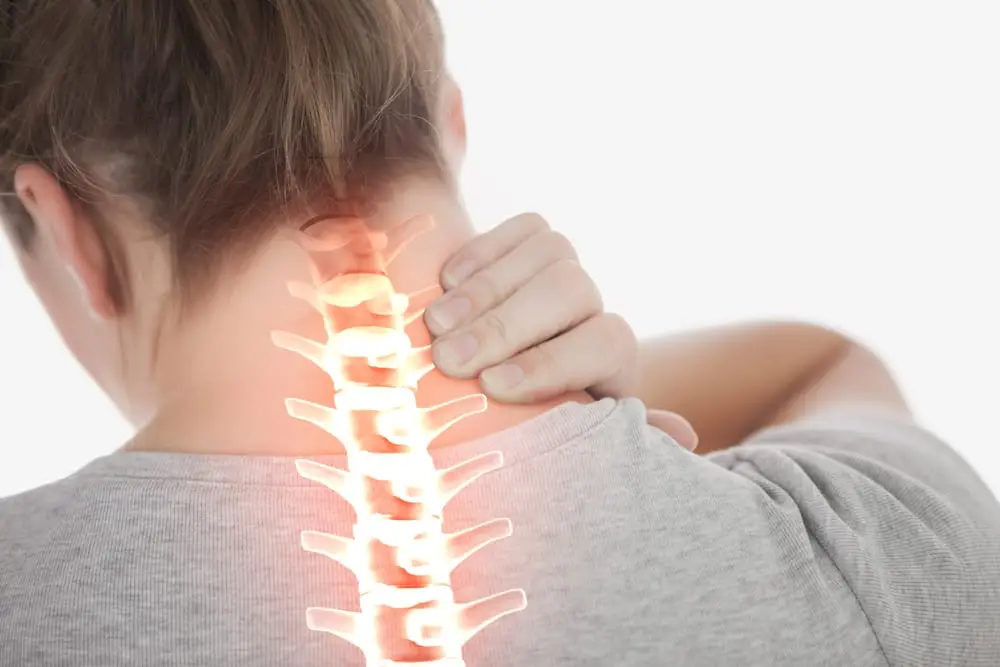The holiday season has come and gone, and many children and adults were the lucky recipients of a hand-held electronic device. Since their introduction only a few years ago, smartphones, tablets, e-readers and even the decidedly less-cool laptops have become a multi-billion dollar a year product category. Everyone, it seems, has one.
This has resulted in millions of people, of all ages, staring down on at a small screen for hours every day. As was noted in a previous blog post, this has resulted in the rise of a non-medical, but extremely descriptive term: Text Neck.
Hand-Held Devices can be a Pain in the Neck
According to the University of Nebraska Medical center, text neck was first coined by a chiropractor in Florida. “It’s defined as overuse syndrome involving the head, neck and shoulders, usually resulting from excessive strain on the spine from looking in a downward position at hand-held devices such as cell phones, mp3 players, e-readers and computer tablets.”

Dr. Rey Bosita, a spine surgeon at Texas Back Institute notes, “This is a pain in the back of a person’s neck, caused by poor back posture while looking down at smartphones, tablets or other electronic devices.”
“The cause of text neck is the same for both kids and adults,” he said. “People have a tendency to hold a mobile device down in the lap or down on a low surface, while keeping the neck flexed. When that happens, the muscles in the back of the neck get fatigued. When users finally get distracted from dealing with “Angry Birds,” email, or Facebook, they feel pain when they try to lift their heads.”
“The problem with text neck is that people might keep their heads in this position for several minutes or several hours every day,” he noted. “This causes a cumulative pain effect. Text neck affects both kids and adults. The biomechanics are the same, whether a person is young or old. The most important thing is to try and prevent it.”
Cognitive Concerns about Digital Entertainment among Children
The constant use of hand-held technology is causing other unintended consequences besides text neck. According to research published in the Journal of the American Medical Association, “electronic toys hinder verbal development and traditional toys, such as common building blocks, sparked higher quality conversations among children.”
Dr. Bosita, while not a child psychologist, is the proud dad of 4 youngsters, and he has first-hand experience with the benefits and challenges of smartphones, tablets and other electronic gadgets in the hands of kids. Does he see any backlash brewing with regard to allowing kids unlimited use of hand-held devices?
“Let me the first to confess,” he chuckled. “I have 4 sons, all younger than 12 years of age. When they start to get really crazy, like in a car or public place, the best way to get them to be still and quiet is with an iPad or my cellphone. I have seen how kids can get ‘plugged in,’ especially when they are using ear buds. As they get lost in the games they are playing , they lose track of the real world around them!”
“I agree with the statement that electronic games can hinder verbal development,” he said. “Parents have to be cognizant of this problem, especially with the little kids. Make sure the kids play with the traditional toys and have enough personal interaction with each other to make sure this ‘locked in’ situation doesn’t happen where the kid’s iPad becomes his or her world.”
What can be Done about Text Neck?
Most experts agree the hand-held device genie is out of the bottle! Kids (and adults) are not going to completely stop texting, playing games, and checking email on their smartphones and tablets. What can parents do to help ameliorate the effects of text neck on their children?
“The most important thing is setting limits,” Dr. Bosita said. “Giving an iPad or smartphone to a kid should not be open-ended – where the device can be used at any time for as long as possible. Parents should set a certain limit on use of minutes per day; this will teach the child that they have to turn these devices off.”
via GIPHY
“As you can imagine, defeating aliens from another planet or getting coins to build a dinosaur is a never-ending process,” he laughed. “The kids want to progress to another level and the games are designed to give enough positive feedback to keep the kid playing. So, the parents have to set limits so that the kids will turn them off. No game will ever turn itself off. Parents must also develop alternatives to this electronic game-play. If the alternative is nothing, of course the kid will want to play video games all d ay. However, if the child is playing soccer, learning piano, going swimming, or doing some other family activity, the kid will not want to use the electronics as much.”
An Ounce of Prevention
As for stopping the pain from text neck, the best cure is prevention.
“The best way to prevent text neck is to hold the device at the proper eye level,” he said. “For example, the proper placement of a computer and monitor is keyboard down and monitor up, so that one is looking directly at the monitor. That’s not really compatible with most mobile devices. You can’t really have hands down and head up at the same time with a small device. Placing the device on a table and using some kind of elevated support to keep your hands off is one way to prevent both text neck and carpal tunnel syndrome.”
“The compromise is to treat it much like reading a book. Start with the back straight up, elbows well-supported and holding the device not too close to the reader’s eyes. Setting time limits is also important for prevention. Get up. Walk around. Don’t get trapped by the electronic device for hours on end.”
“As for treating text neck, there are a lot of home exercises that someone can do,” he said. “Isometrics can be done in multiple directions against one’s own hand to build strength in the neck muscles. Stretching exercises can also be used to reduce the neck tension and improve range of motion.”
For anyone who has experienced it, text neck is more than a clever term. It’s a painful problem. If you or your child are experiencing prolonged pain from the use of electronic devices, contact Texas Back Institute for an appointment.
To hear the complete interview with Dr. Rey Bosita, click below for the Spine Talk podcast.


